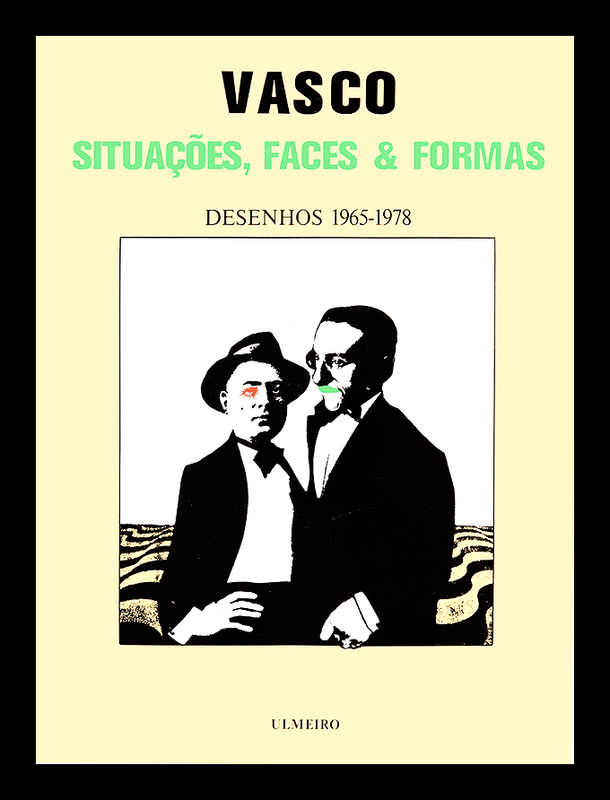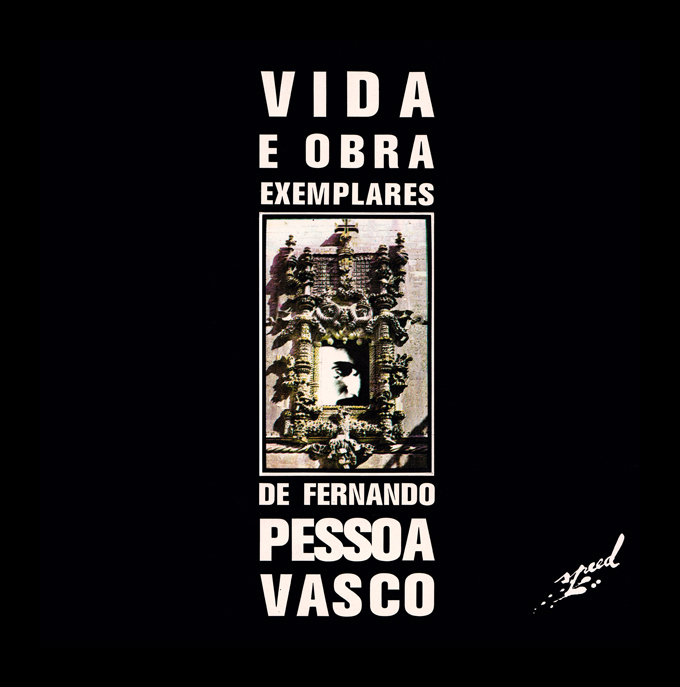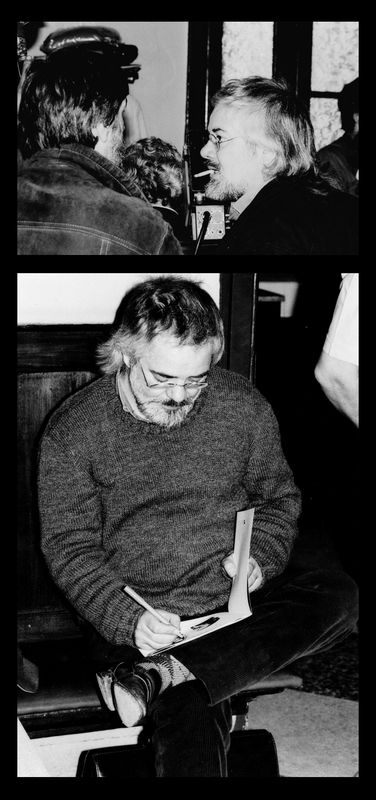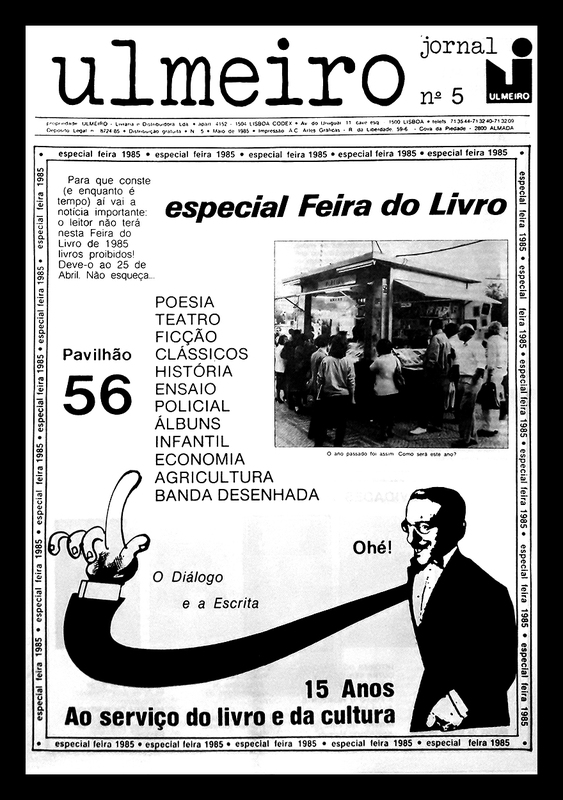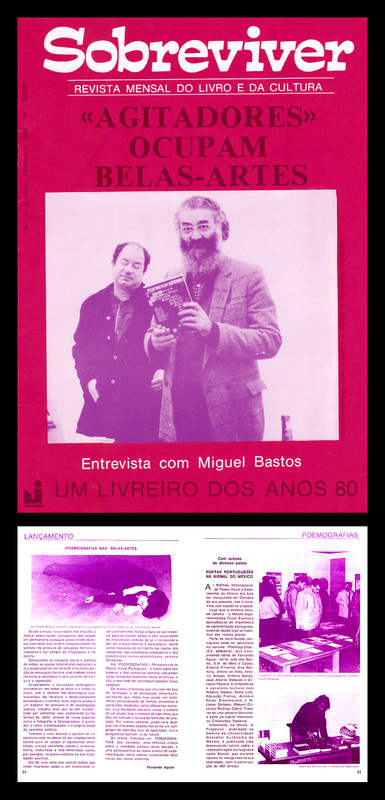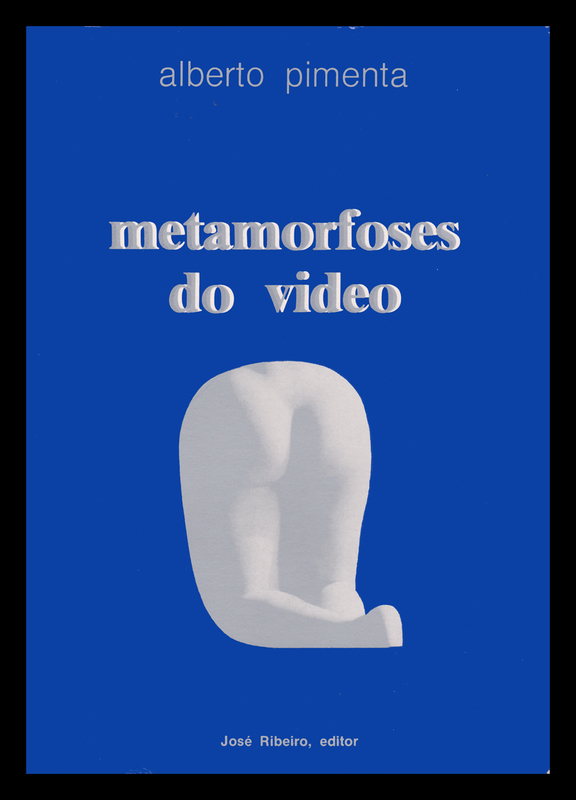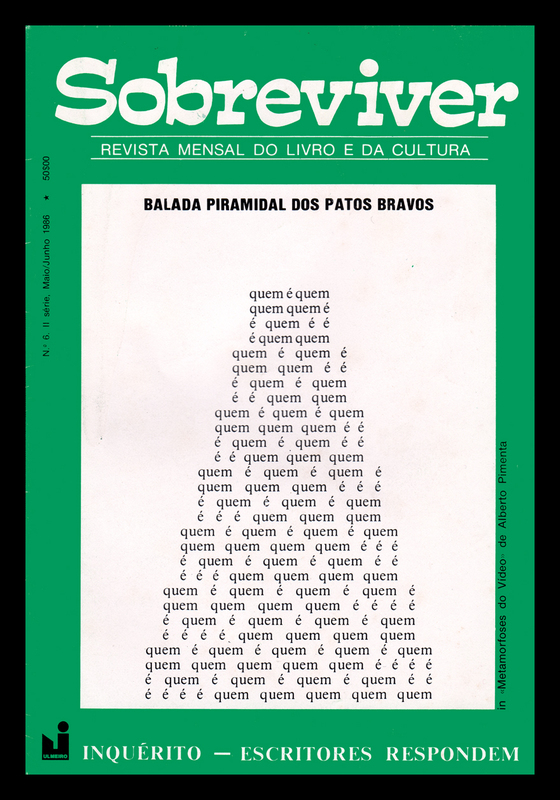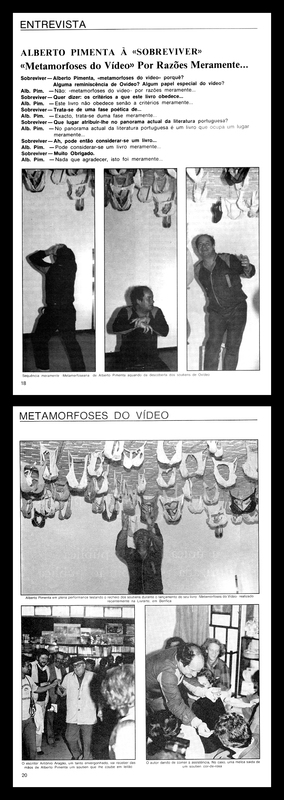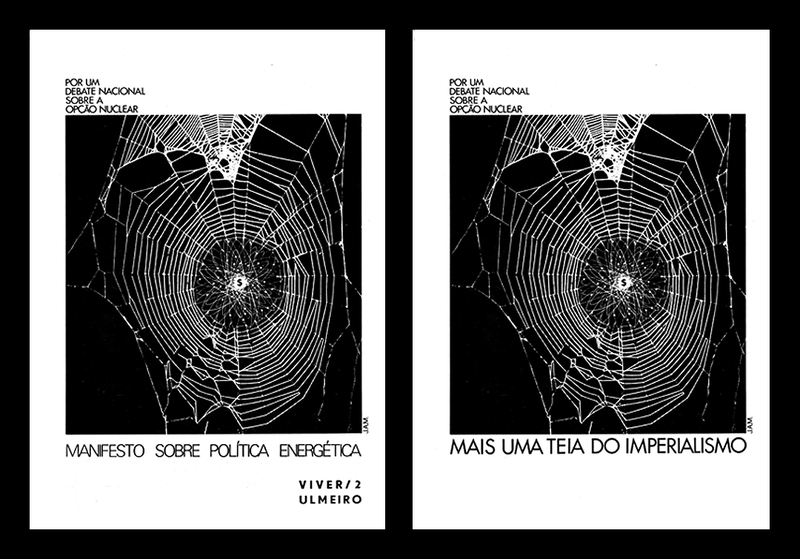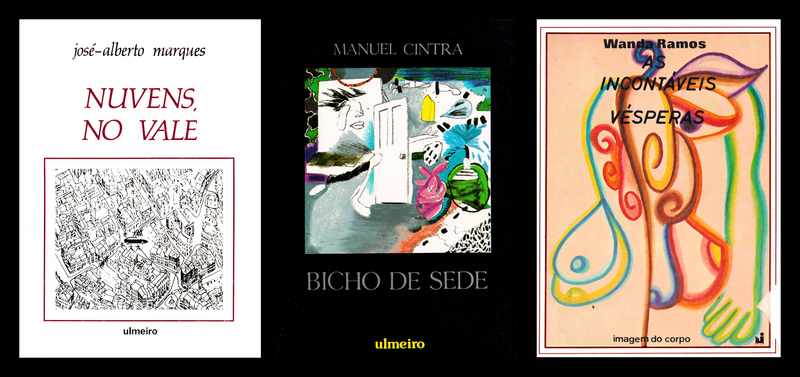10. Illustration and other visual-aesthetic milestones
This section aims to contribute to the knowledge of some of the most relevant illustration and design that Ulmeiro has commissioned, as well as highlighting certain milestones in its path as a cultural promoter with a broader project, beyond the mere publishing, distribution and sale of books.
In this sense, and with the conditioning of the materials that were possible to gather in due time, it appears important to emphasise the contribution of the artists Vasco, in political caricature, of the illustrator António Pimentel, in the visual conception of the iconic collection Imagem do corpo [Image of the Body]. Due to its consensual value in the illustration, it is also worth mentioning the existence of precious illustrations by João Abel Manta and Mário Botas in the Ulmeiro catalogue.
It is also important to underline the relevance of the publication of the collective book Poemografias [Poemographies], not only for the book itself but also for being a theoretical and aesthetic reflection on a type of poetry more directly linked to visuality, precisely the visual/ experimental poetry. Of this aesthetic current stood out José-Alberto Marques and Alberto Pimenta, whose collaboration with Ulmeiro will extend to the edition of a book of poems by each (respectively, Nuvens, no vale, 1985, and Metamorfoses do vídeo, 1986).
Finally, it is emphasised the contribution of a wide range of women illustrators who have contributed to give visibility to the works of many Portuguese (and not only) women writers, new or meriting greater projection, in an assumed complicity. We talk about artists like Ana Leão (responsible for the covers of Montedemo and Estátua de sal, books of 1983, respectively by Hélia Correia and Ondina Braga), Carmen (Isabel, Isabel, Isabel, by Noémia Seixas, 1983, Dinâmica subtil, by António Ramos Rosa, 1984, and Nuvens, no vale, by José-Alberto Marques, 1985), Cristina Reis (Ah Q, by Bernard Chartreux and Jean Jourdheuil, and Fanshen, adapted by David Hare, both from 1976, and Bicho de sede, by Manuel Cintra, 1986), Graça Martins (Restos de Infantas, by Isabel de Sá, 1984), Lídia Martinez (Cartas de Pedro e Inez, by herself, and As cartas de Yage, by Burroughs and Ginsberg, both from 1994) and Wanda Ramos (a drawing on the cover of As incontáveis vésperas, 1984, authored by herself).
This web publication had the support of CHAM (NOVA FCSH/UAc), through the strategic project sponsored by FCT (UIDB/04666/2020). This work is funded by national funds through the FCT – Fundação para a Ciência e a Tecnologia, I.P., under the Norma Transitória – DL 57/2016/CP1453/CT0062.

